
Semen Analysis
What is a semen analysis?
A semen analysis evaluates the quality and volume of a man’s sperm in a man’s semen (the fluid that comes from a man’s penis when ejaculation occurs). It is one of the first steps to detecting male infertility issues.
The semen sample is viewed under a high-powered microscope. Sperm analysis is sometimes referred to as a sperm count test or a male fertility test. The analysis is done by examining how the sperm are shaped (morphology), how well they move (motility), and how many sperm are released in an ejaculate of semen (count), among other factors.
When is a semen analysis needed?
When a couple is experiencing infertility, one of the first steps to uncover the reason is a semen analysis. The absence of sperm or poor health factors of the sperm may cause a couple’s infertility. A semen analysis can answer these questions: Are sperm present? Are they healthy enough to reach and inseminate an egg?
A certified andrology laboratory should analyze the semen sample within one hour of collection. It should be repeated a second time if there are abnormalities, as some abnormalities are common and only of concern if they appear consistently and in high numbers. An abnormal semen analysis should always be evaluated by a fertility specialist, ideally a reproductive urologist.
A semen analysis is also used to determine if a vasectomy has been successful. A vasectomy is a surgical procedure that prevents sperm from being ejaculated during sex and thus prevents pregnancy.
Watch this video to learn about different semen analysis tests:
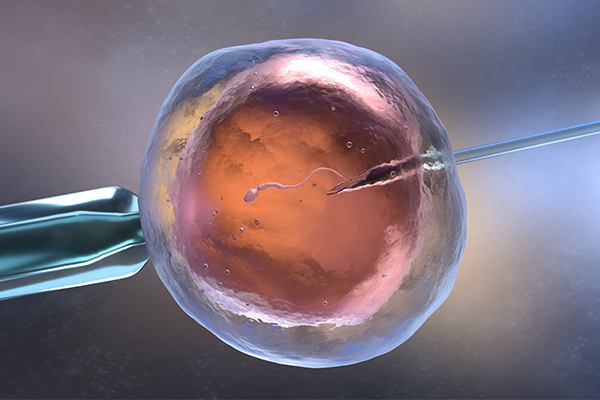
ON THIS PAGE
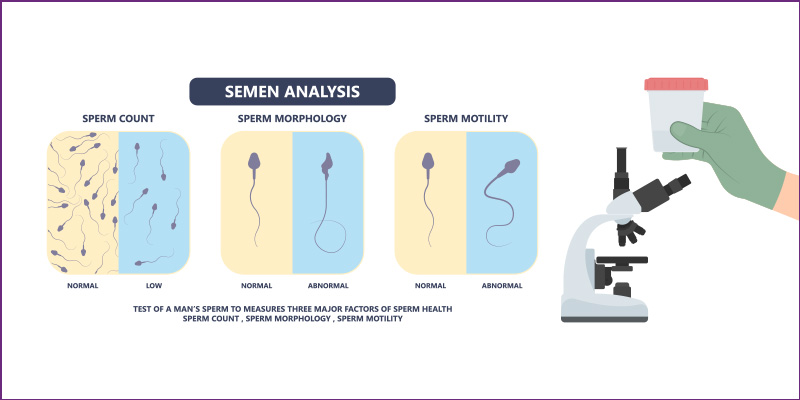
What are the preparation steps for providing a semen sample?
Here are the typical steps for providing a semen sample:
- No intercourse or masturbation for 2-5 days
- Possible adjustments to certain lifestyle preferences days before providing a sample, including the avoidance of caffeine, alcohol, and some medications
- A sample should be provided in the sterile container provided by the fertility clinic, labeled with name, date of birth, and time of ejaculation
- If a sample is produced at home, it must be kept at body temperature and delivered in the specified container within 1 hour
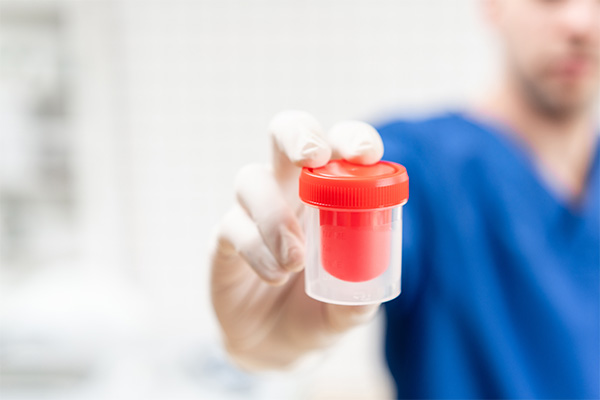
What exactly is being evaluated in a semen analysis?
A semen sample is put under a microscope, and the specialist looks for several characteristics, including semen volume, sperm count, shape (morphology), and movement (motility), among other factors.
More specifically, a semen analysis typically looks at all the characteristics present in a healthy sperm sample. Based on the latest criteria established by the World Health Organization in 2021, the lower limit of normal for a semen analysis includes the following:
- Volume: greater than 1.4 ml
- The concentration of sperm present per ml of the ejaculate: greater than 16 million/ml
- Motility (percentage of sperm moving): 42% or more
- Forward movement of sperm, called progressive motility, should be greater than 30%
- Morphology: percentage of normally shaped sperm should be 4% or more by Kruger’s strict criteria
- Presence of white blood cells: less than 1 million/ml
Here are examples of what a specialist may see under the microscope:
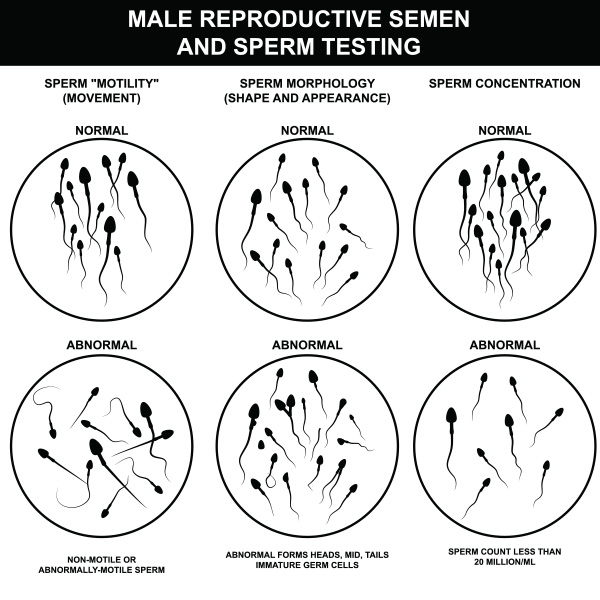
Interpreting semen analysis
Interpreting the semen analysis is not as simple as comparing the results to the normal reference ranges because some parameters can change dramatically daily. This is influenced by the time since your last ejaculation and the fact that sperm are released from the testes in waves. One study found that 15% of men with normal fertility have semen parameters outside the reference range in a single analysis. When parameters are not in the reference range, it is important to consult a reproductive endocrinologist to help you interpret the results.
If your results are all within the normal reference ranges, this does not rule out an undetected functional problem with sperm. However, the probability of a problem is lower when the values are all normal. Likewise, an abnormal semen analysis does not mean that there is a problem; it just makes it more likely that there is a problem. When semen parameters are outside the reference ranges, it is helpful to repeat the test to understand which direction the variability will go.
Factors that can influence semen parameters include:
- Medications
- Infections of the reproductive tract
- Endocrine problems (central nervous system, gonadal, thyroid, etc.)
- Diabetes or other chronic medical conditions
- Defective genes
- Radiation exposure, such as from cancer treatments
If your semen samples persistently outside the reference ranges, your specialist will discuss solutions for achieving fertility. There are many options.
What is considered a low sperm count?
The average sperm density in an ejaculate is approximately 75 million sperm per milliliter of semen. If there are fewer than 16 million sperm per milliliter or less than 39 million sperm total per ejaculate, the sperm count is considered low.
Some men with low sperm counts can successfully father children. And some men with normal sperm counts are unable to father children. It is important to remember that many factors are involved in reproduction, and the number of sperm in semen is only one. Even if a man has enough sperm, other factors are important to achieve a pregnancy, including normal sperm movement (motility).
In the case of azoospermia (the absence of any sperm in the ejaculate), an infertility specialist will explore many different solutions to achieve fertility, such as in-vitro fertilization with sperm retrieval.
How is semen analysis used to determine vasectomy success?
If the semen analysis is done to determine the success of a vasectomy, the specialist will look for the presence of any sperm. If no sperm are found, a couple should be able to stop using other forms of birth control. However, if sperm are found, repeated tests may need to be done until the sample is clear of all sperm. In the meantime, birth control precautions must be taken to prevent pregnancy.
What is sperm motility, and what is considered healthy?
Healthy sperm motility is defined as a sufficient percentage of sperm movement, including the percentage of sperm with forward progression in a semen sample. Poor sperm motility is called asthenospermia or asthenozoospermia. There are different problems with sperm motility issues, including:
- Low total motility percentage
- Slow or sluggish progressive motility
- No motility at all
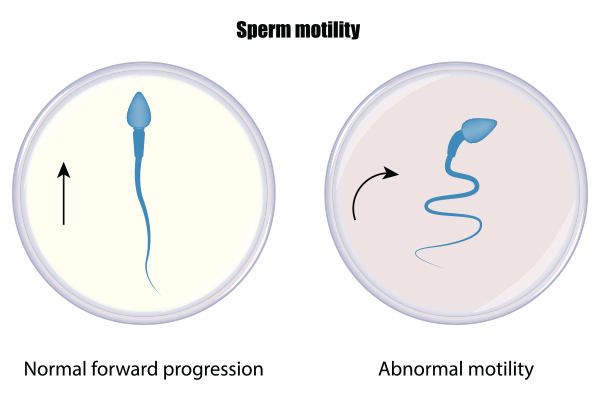
What are some of the causes of low sperm motility?
Causes for low sperm motility can vary. Varicocele, the enlargement of veins inside the scrotum, is the most common cause of decreased sperm motility. Some causes are genetic, while others may have undiagnosed medical conditions. Lifestyle and environmental factors can play a role. For example, smoking has been linked to low sperm motility in some clinical trials, especially if a male smokes more than 10 cigarettes per day. Some work conditions can also create risks for low sperm motility, including long driving hours or exposure to toxins.
What is sperm morphology?
Sperm morphology refers to the size and shape of sperm as seen under a microscope. Analysis results are reported as the percentage of sperm that appear normal.
What is normal? Normal sperm have an oval head with a long tail. Abnormal sperm have head or tail defects, such as a large or misshapen head or a crooked or double tail. These defects can affect the ability of the sperm to reach and penetrate an egg. However, having a large percentage of misshapen sperm is not uncommon. Usually, at least 4% to 10% of sperm in a semen sample are normal; the remaining 90-96% do not look perfect under a microscope.
Most male fertility experts agree that the role of sperm morphology in predicting pregnancy is unclear and that it is a poor predictor of infertility unless nearly 100% of the sperm are abnormal.
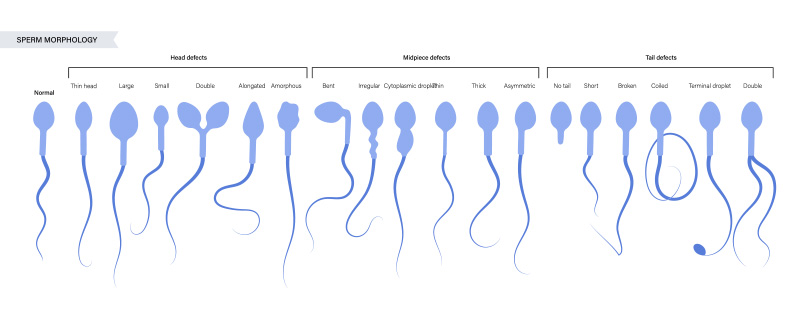
What if semen analysis indicates azoospermia or abnormalities?
Many male-factor infertility issues detected in a semen analysis are often treatable and fall across a spectrum of concern. For example, there is a difference between having a low sperm count or no sperm count, having poor sperm motility, and having no motility. If semen analysis results determine that an issue is present, the next step is to make a diagnosis to determine a treatment plan for the particular condition.
It is also important to note that an abnormal semen analysis does not mean a male is infertile. Many males with low semen analysis values still father children. Sometimes it just takes longer to achieve a pregnancy, and sometimes, it takes fertility interventions such as sperm retrieval and in-vitro fertilization.
Each semen analysis case is unique.
If you have an abnormal semen analysis, the specialists at Atlantic Reproductive Medicine will discuss all potential additional tests and treatments in great detail to ensure you are fully informed. You are making the best decisions for what steps to take next, given your unique medical history, personal preference, and desired goals.
The Atlantic Difference
What makes having a semen analysis at Atlantic Reproductive Medicine better than one you can get at a hospital or a mail-in service? Many hospitals, large-scale laboratories, and mail-in services only provide what is called a computer-assisted semen analysis, which is performed by a machine. These analyses are susceptible to inaccuracies. At Atlantic Reproductive Medicine, a certified andrologist counts sperm and assesses for other abnormalities using state-of-the-art equipment and techniques. In direct consultation with a fellowship-trained reproductive urologist, a lab director certifies and reviews the results. A reproductive urologist is available for consultation with couples who have an abnormal semen analysis.
Getting started with a semen analysis at Atlantic Reproductive Medicine
You can be referred to Atlantic Reproductive by your primary care physician or call directly to make an appointment without a referral. The results will be available to you through our portal. If the results are not in the reference range, you can either repeat the test or request a consultation with one of our physicians. These consultations can either be conducted in person or by phone. Couples often benefit from a preconception counseling appointment where they can discuss their test results, other diagnostic tests, ways of optimizing their fertility, and preventing several problems that might arise in pregnancy.
Contact us if you are concerned about infertility and have questions @ (919) 248-8777.
Male Fertility Treatments

Causes of Male Infertilty
A common misconception is that an infertility problem usually lies with the female. The reality is that half of all infertile couples have a contributing male factor.

Vasectomy Reversal
Vasectomy reversal is a surgical procedure to undo a vasectomy and when done by a skilled surgeon it is successful on most men.

MicroTESE
Microsurgical testicular sperm extraction (microTESE) retrieves sperm from the seminiferous tubules of a male’s testes in men with non-obstructive azoospermia.

No-Scalpel, No-Needle Vasectomy
No–scalpel, no-needle vasectomy is the least invasive form of vasectomy, a safe and effective form of birth control for males who are confident they do not want to father a child in the future.

Semen Analysis
Semen analysis evaluates the quality and volume of a sperm in semen. It is one of the first steps to detect male infertility issues.

Azoospermia & Abnormal Semen Quality
Azoospermia is the absence of sperm in the ejaculate. Abnormal semen quality in ejaculate refers to quality issues with sperm in the semen that can make the sperm unable to achieve fertilization of an egg.

Varicocele
A varicocele is a dilated vein within the scrotum which holds and protects the testicles. It can occur in one or both testicles and can cause male infertility.

Ejaculatory Dysfunction
Ejaculatory dysfunction is among the most common sexual disorders but there are many solutions, including medications, assistive neurostimulatory methods, and surgical sperm retrieval.

Sperm Selection
Sperm selection can separate highly motile, normal sperm from those of lower quality which is critical for fertility treatments such as intrauterine insemination (IUI), in vitro fertilization (IVF), or intracytoplasmic sperm injection (ICSI).

Sperm Retrieval
Sperm retrieval (harvesting) is done to find and retrieve sperm from the testis or epididymis in men who want to achieve pregnancy but have no sperm in their ejaculate.
